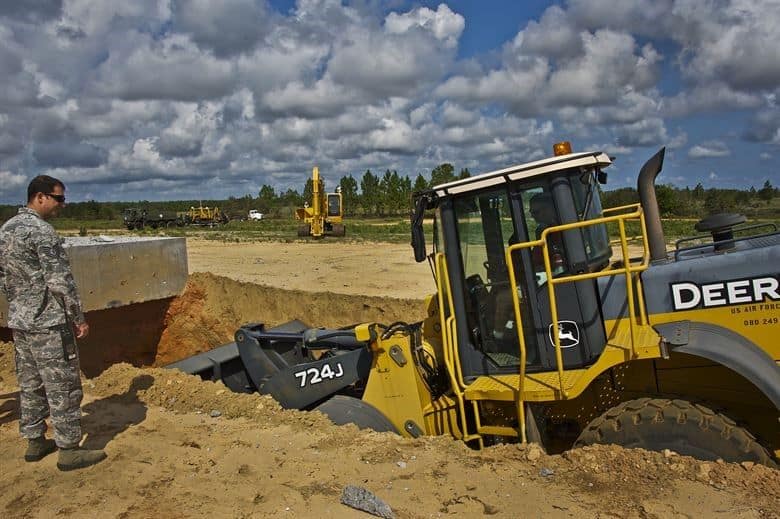There are many ways in which construction crews remain safe. Using hi-viz vests allows construction workers to see each other from a distance to ensure onsite safety. Collapsible cones, grabber cones, and barricades help block off areas, so only those authorized to be on a job site or field are actually within that zone.
But, today, the use of technological advancements, is also making its way onto construction sites. And, these technologies are significantly improving the way communication occurs, and ways in which construction crews stay safe on site.

How exactly is the technology used for safety? There are many ways. These are three prominent areas in which technology has helped enhance onsite safety.
Virtual Reality
The use of VR headsets is immense in the construction industry today. These headsets are great for workers to mimic what happens on a job site without the risk of injury or making mistakes.
For example, training employees using VR headsets allows construction companies to set up fictional situations in which workers might find themselves.
The VR headset will enable them to take different approaches at completing a task or working with others to ensure the highest levels of safety. This is also an excellent way to decipher how to approach a problem and for employees to learn how to avoid making mistakes on a worksite.
Not only does this virtual training give workers different looks at how to fix a problem, but it also allows them to make mistakes, and see what happens taking different approaches.
So, if they ever run into a situation when working on-site, they’ll know how to resolve it and know a few different ways to approach a job to handle it.
Smart Sensors
Again, the hi-viz vests are high, and so are the cones. But they aren’t enough. People are distracted. Especially with so much movement and noise on a job site, it’s not hard to imagine seeing someone walking around with their head down and not looking up at objects coming their way. Sensors are a great way to monitor those dangers.
And, it’s not just for employees who aren’t paying attention. Sensors can detect gas leaks, toxins in the area, and potentially hazardous and environmental threats nearby.
This gives construction companies a better indication of where to build, where to forego building, and how to ensure their workers are safe in the event they are on a site that poses some environmental dangers around them while working.
Wearables for Safety and Data Collection
Wearable construction equipment and safety gear are also available today with technological advancements. For example, there are goggles that capture in real-time what is going on where an employee is working.
Employers can detect these things if they don’t measure something accurately or if employees are taking shortcuts. They can mitigate damage, and injuries, and help ensure a safer worksite. Vests have built-in GPS trackers.
This not only allows construction crews to know where other people are on-site, but in the event of danger or something potentially dangerous nearby, managers and construction teams can warn other employees on-site to get away from an area they’re working in.
Technology in wearable solutions and gear is great for collecting data to ensure work is done accurately and correct errors where they’re present.
But, they are also available to help keep employees safe on-site and prevent work-related injuries that used to occur so frequently in the past on job sites.
There are many advancements available to construction crews and companies today that not using them is hindering progress, process, and growth within the industry. And, it’s not just for saving money and increasing profitability, but also to ensure your workers are safe on a job site and ensure the general public around that site is safe while your crew is working.
For companies resistant to adjusting and accepting change, these are a few of the essential pieces of equipment and technologies you might want to embrace, which will not only keep workers safe but provide you with real-time data, to help improve your practices on jobs as well.

